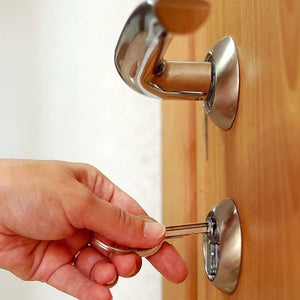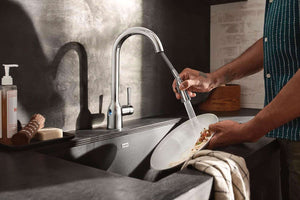
Unlocking Antiquity: Stunning Old Door Locks that Still Turn Heads
In the home decor and renovation world, few things evoke nostalgia and charm quite like antique door locks. The intricate designs and craftsmanship of old door locks, such as the antique mortise lock, antique door latch, and vintage mortise lock, offer a unique aesthetic appeal and serve as a testament to the ingenuity of bygone eras. This detailed outline aims to explore the fascinating world of old door locks, providing insights into their history, functionality, and tips for incorporating them into modern homes.
What Is An Antique Mortise Lock?

An antique mortise lockset is a door lock commonly used in older homes and buildings. It is called a "mortise" lock because it is installed within a pocket or recess (known as a mortise) at the edge of a door. These locks are typically solid brass or iron and have intricate designs and decorative elements, making them highly sought after by collectors and antique enthusiasts.
Unlike modern, surface-mounted, mortise locks require a more complex installation process and are operated using a key and a latch mechanism. They are known for their durability and security, which is why many people still appreciate and use them today in historical homes or for adding a touch of vintage to their interiors.
What Is An Antique Door Latch?An antique door latch is hardware commonly used in older homes and buildings. This mechanism allows a door to be securely closed and opened. Antique old door latches are typically made of metal, such as brass or iron, and often feature intricate designs or embellishments that were popular during the period in which they were produced. These door latches can add a touch of vintage charm to any door and are often sought after by collectors or those looking to restore or replicate the historic look of a building.
When Were Antique Door Locks First Used?Antique door locks have been used for centuries, with the earliest known examples dating back to ancient civilizations such as Egypt and Mesopotamia. These early locks were typically made of wood or metal and operated using simple mechanisms. However, using more sophisticated locking tools, such as pin tumbler locks, became more prevalent during the Roman Empire. Over time, door locks continued to evolve and improve, with various designs and materials used throughout different periods and regions.
How Do Antique Door Locks Work?
Antique door locks often operate using a mechanism called a pin tumbler lock. Here's how they work:
Key insertionThe key is inserted into the lock, which is the part of the lock visible on the door's exterior.
Pin alignmentInside the lock cylinder are a series of pins of different lengths. When the key is inserted fully, these pins align along a horizontal line called the shear line.
Shear lineThe shear line is the gap between the inner cylinder, the plug, and the outer cylinder, the housing. The plug can rotate freely when the pins align at the shear line.
Turning the keyWhen the key is turned, it rotates the plug inside the housing. This movement causes the lock's internal mechanism to engage or disengage, depending on the direction of the turn.
Locking or unlockingIf the key is correct, turning it in the right direction will align the pins at the shear line and enable the plug to rotate fully. This movement either engaged or disengaged the locking mechanism, locking or unlocking the door.
Antique door locks may also have additional features or variations in their mechanisms, depending on the specific design and era. It's important to note that antique locks may vary in complexity and security, so it's always a good idea to consult a locksmith or antique hardware specialist if you have any concerns or questions about a particular lock.
How Can Antique Door Locks Be Maintained?Maintaining antique door locks is essential to ensure their longevity and functionality. Here are some tips to help you maintain antique door locks:
- Clean the lock with a soft cloth or brush to remove dirt, dust, and debris. Avoid harsh chemicals or materials that could damage the delicate components.
- Apply a small amount of graphite powder or silicone-based lubricant to the keyhole and moving parts of the lock.
- Avoid applying excessive force when using the key to open or lock the door.
- If you notice any broken or worn-out parts, it is essential to repair or replace them as soon as possible. Consult a professional locksmith or restoration expert specializing in antique locks for assistance.
- If you have spare antique locks or need to remove them temporarily, store them in a dry and secure place.
- Regularly inspect the lock for any signs of wear, damage, or loose screws.
By following these maintenance tips, you can help preserve the functionality of your antique door locks for years to come.
The Bottom Line!Antique door locks, including the antique mortise lock, antique door latch, and vintage mortise lock, hold a timeless appeal that transcends eras. Whether you are interested in preserving your home's historical integrity or simply appreciating the intricate designs of the past, incorporating these old door locks can add a touch of elegance and nostalgia to any space. By understanding their history, functionality, and maintenance, you can integrate these remarkable pieces of craftsmanship into your modern abode.



